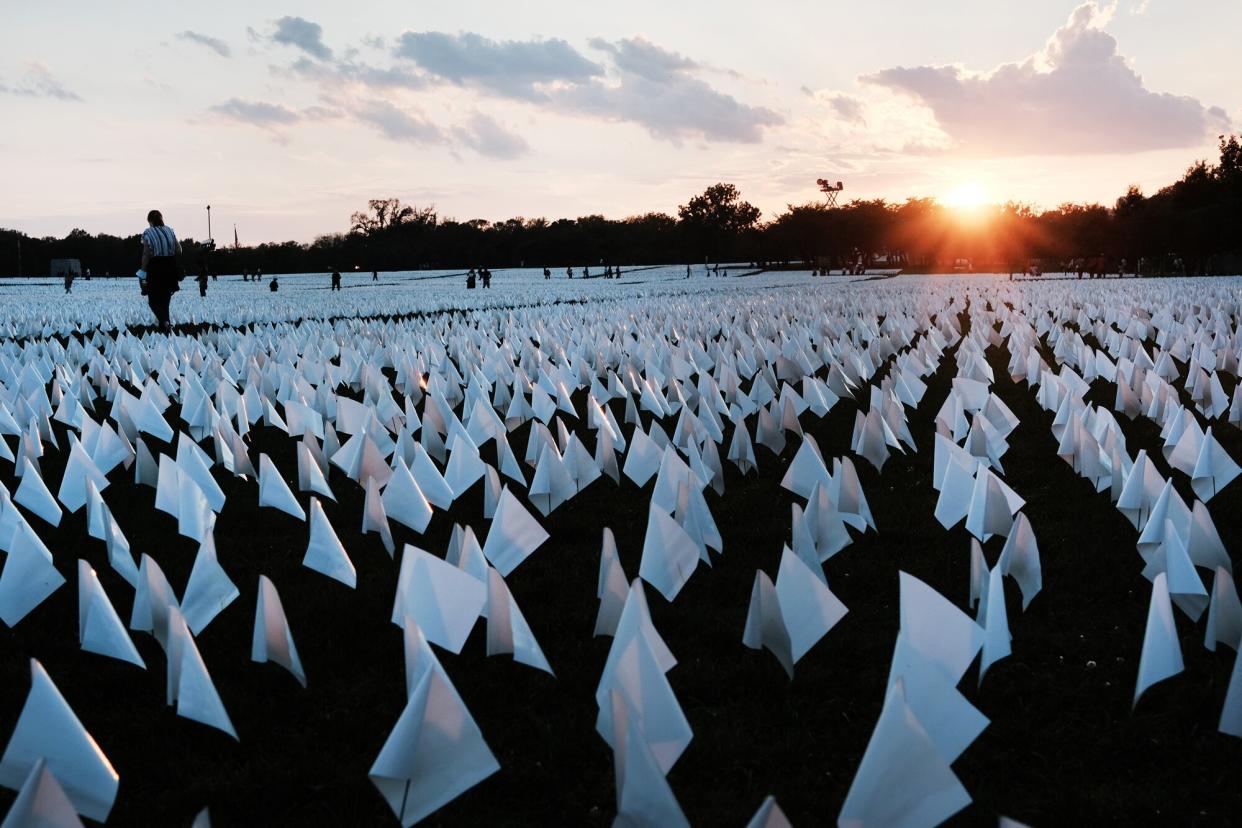U.S. Life Expectancy Falls for Second Year in a Row, Marking Worst 2-Year Drop in a Century

Spencer Platt/Getty Over 650,000 white flags planted on National Mall to honor American COVID-19 deaths
For the second year running, life expectancy in the United States has dropped.
In 2021, life expectancy in the United States was down to 76.1 years — a 0.9 decline from 77 years in 2020, according to a "Vital Statistics Rapid Release" of provisional estimates published by the Centers for Disease Control and Prevention's National Center for Health Statistics Wednesday.
The report explained "excess deaths due to COVID-19 and other causes in 2020 and 2021 led to an overall decline in life expectancy between 2019 and 2021 of 2.7 years for the total population, 3.1 years for males, and 2.3 years for females."
As of Aug. 27, CDC data indicated that over 1.4 million people have COVID-19 as a related cause of death on their death certificates.
The CDC did not immediately respond to PEOPLE's request for comment.
"The results of this study are very disturbing," Dr. Steven Woolf, a professor of population health and health equity at Virginia Commonwealth University told NPR of the numbers. "This shows that U.S. life expectancy in 2021 was even lower than in 2020."
RELATED: Dr. Anthony Fauci to Step Down in December as Nation's Top Infectious Disease Expert

Getty Paramedics walking into hospital
The outlet noted that other high-income countries have since seen life expectancy estimates bounce back, something Woolf said makes the case in the U.S. "all the more tragic."
The new data indicated the nation's worst two-year decline on record since 1923, CBS News reported, and that life expectancy is now at its "worst" level since 1996.
According to the report, American Indian and Alaska Native populations saw the largest decline in life expectancy in the U.S., from 67.1 in 2020 to 65.2, in 2021. The report noted that that estimate mirrors what the general life expectancy was for people in the U.S. in 1944.
"That's horrific," Woolf told NPR. "The losses in the Native American population have been terrible during the COVID-19 pandemic. And it reflects a lot of barriers that tribal communities face in getting access to care."
RELATED: Free At-Home COVID Tests Will End Due to Lack of Funding
Non-Hispanic white Americans saw the second greatest decline from 77.4 to 76.4 years, while the rate declined from 71.5 to 70.8 for Non-Hispanic Black Americans.
For the Hispanic population in the U.S., the estimate dropped by 0.2 years to 77.7, which the report noted is lower than in 2006, at 80.3 years, when life expectancy rates for people who identified as Hispanic were first documented.
The report showed that the non-Hispanic Asian population in the U.S. is still the group with the highest life expectancy, experiencing the smallest decline from 83.6 to 83.5 in the most recent report.
After COVID-19, the second biggest overall reason for the decline in life expectancy is "unintentional injuries," which the report indicated "were largely driven by drug overdose deaths."
As information about the coronavirus pandemic rapidly changes, PEOPLE is committed to providing the most recent data in our coverage. Some of the information in this story may have changed after publication. For the latest on COVID-19, readers are encouraged to use online resources from the CDC, WHO and local public health departments.

